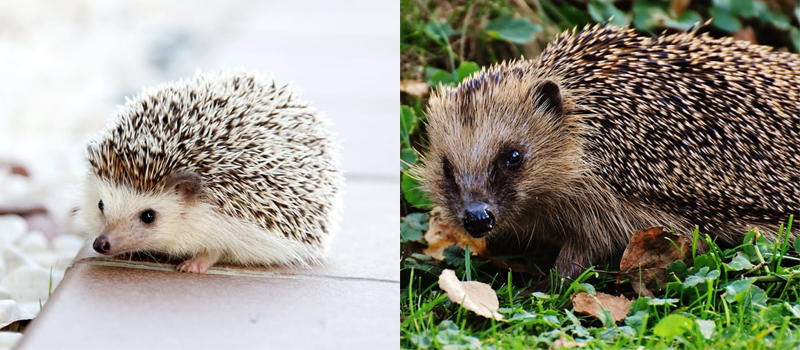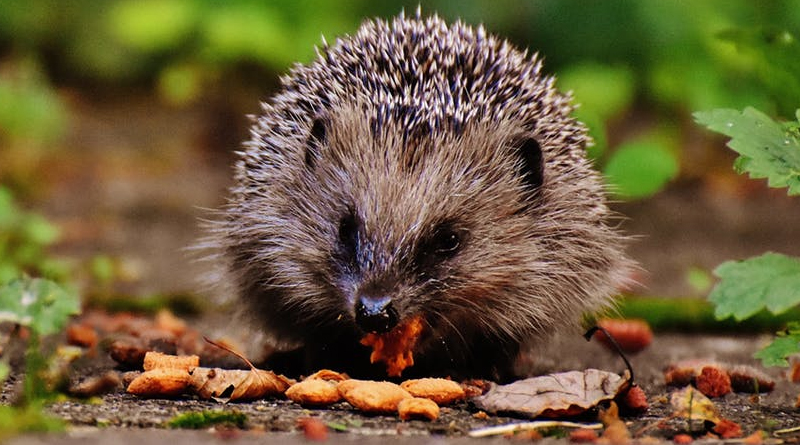MYTH BUSTING: HEDGEHOGS
What do you know about hedgehogs? Getting the key facts right could help save Britain’s favourite mammal?
The British public and wildlife conservationists alike hold hedgehogs and their conservation very close to their hearts. However, there are a number of myths that have developed over the years about our spiny friends that could be hampering efforts to increase their numbers.
Now, wildlife charities People’s Trust for Endangered Species (PTES) and the British Hedgehog Preservation Society (BHPS), who have been working together on hedgehog conservation for the last decade, want to share the top five common myths surrounding them. Busting these myths will ensure everyone involved in trying to halt their declining numbers has the correct facts at their fingertips.
Voted Britain’s favourite mammal in 2016, West-European hedgehogs (Erinaceus europaeus), are not short of admirers, and yet these creatures are often the victim of mistaken identity, given the wrong food or even thought of as fleabags!
Myth 1: A case of mistaken identity! Can you spot which is Britain’s native hedgehog?

The West-European hedgehog is Britain’s native hedgehog, seen on the right in the image above. They have darker, more rounded features.
African pygmy hedgehogs (left) have paler facial hair, pink-brown snouts, lighter spines and pointier features. Pygmy hedgehogs cannot survive in the wild in the UK, so are sometimes kept as exotic pets seen across social media and YouTube – often incorrectly labelled as native British hedgehogs.
Myth 2: There were 30 million hedgehogs in Britain in the 1950s
This idea of 30 million hedgehogs was suggested by naturalist Maurice Burton during a visit to the Royal Botanic Gardens at Kew in the 1950s and this figure seems to have stuck. In truth, we have no idea how many hedgehogs there were in the 1950s, though we do know they were more abundant.
Evidence suggests that our hedgehogs have been declining in England since at least the 1990s when formal monitoring first started, though it’s thought populations had been declining for much longer. It is now estimated that populations have declined by up to a third in urban areas, and by at least half in rural areas since 2000.
Myth 3: British hedgehogs are threatened with extinction
Though population trends do show an ongoing decline, it is unlikely that this will eventually result in hedgehog extinction. Should the decline continue, it is most likely that hedgehogs will survive in patches of land; studies by BHPS, PTES and others suggest a minimum of 32 individuals in 90 hectares of the best habitat available (i.e. a connected suburban landscape) and is the minimum requirement for an isolated population to survive.
The main concern is that hedgehogs are becoming a rare sight in our gardens, parks and other spaces – across both rural and urban landscapes. If this continues, it could result in huge parts of Britain not being home to any hedgehog populations at all, which would be tragic. This is more realistic as a consequence, rather than extinction.
However, with the public’s help BHPS, PTES and others can help to ensure this doesn’t happen, so that future generations can enjoy this iconic British species.
Myth 4: Time for a better diet: no more bread and milk for our hedgehogs!
It is fantastic that the public want to help provide food for hedgehogs, especially when natural food may be scarce, but hedgehogs, like humans, can only eat and drink certain things.
Did you know that hedgehogs are lactose intolerant, and that milk can cause diarrhoea? If you’d like to leave a drink out for passing hedgehogs, please make sure it’s a small bowl of water.
Feeding bread to hedgehogs, like ducks at your local pond, is not recommended. A hedgehog’s diet should be mostly protein-based, so either provide specific hedgehog food or meat-based pet food, with the option of small amounts of crushed unsalted nuts and/or mealworms – your hedgehogs will thank you for it.
Myth 5: Hedgehogs transmit fleas to pets
Hedgehogs are sometimes unfairly branded as fleabags – the hedgehog flea (Archaeopsylla erinacei) is host-specific, meaning it will only survive on hedgehogs. So, if a hedgehog flea were to be transferred to one of your pets, it would soon drop or hop off.
The State of Britain’s Hedgehogs 2015 report, published by BHPS and PTES, showed a continuing decline in hedgehog numbers, in both rural and urban landscapes. The loss of hedgerows and intensive farming in rural areas, along with tidy, fenced-in gardens in urban and suburban locations, are just some of the threats contributing to the demise of Britain’s native hedgehog.
Despite this, there are several ways the public and conservationists alike can help to combat falling hedgehog numbers. BHPS and PTES set up Hedgehog Street in 2011, a citizen science campaign which offers advice and encourages people to connect their gardens and other green spaces to improve hedgehogs’ access to food, shelter and mates.
Since its launch, Hedgehog Street has inspired over 43,000 volunteers (Hedgehog Champions) to create hedgehog-friendly neighbourhoods, by linking up their gardens. Other small changes people can make to help hedgehogs include:
• Pledge to make a small hole – no bigger than a CD case – in your garden fence, wall and other barriers, to allow hedgehogs access to different gardens
• Log your ‘hog sightings – dead or alive – on The BIG Hedgehog Map
• Provide suitable food for hedgehogs, such as hedgehog food or meaty pet food, and water to drink
With the correct facts at your fingertips, join the ongoing campaign to save our hedgehogs by becoming a Hedgehog Champion: www.hedgehogstreet.org

